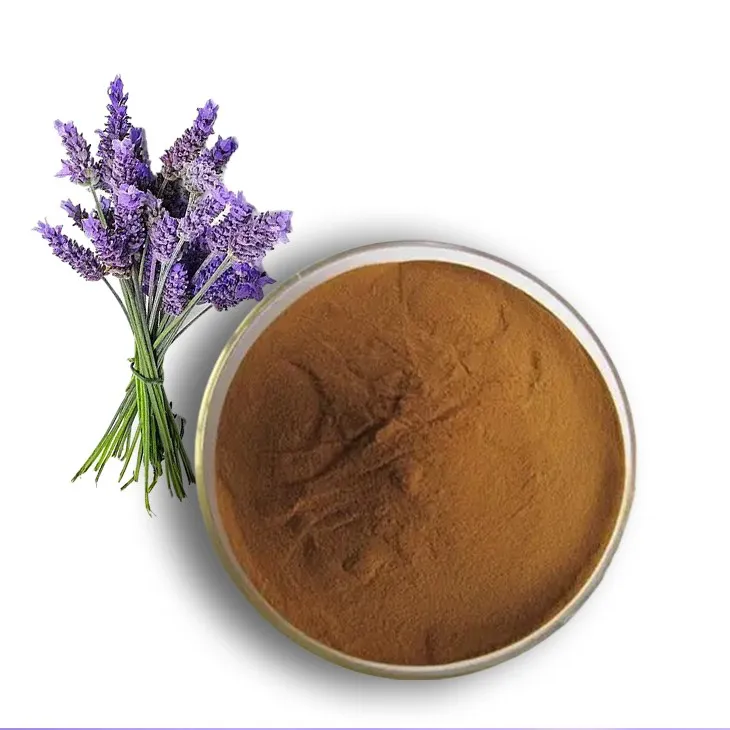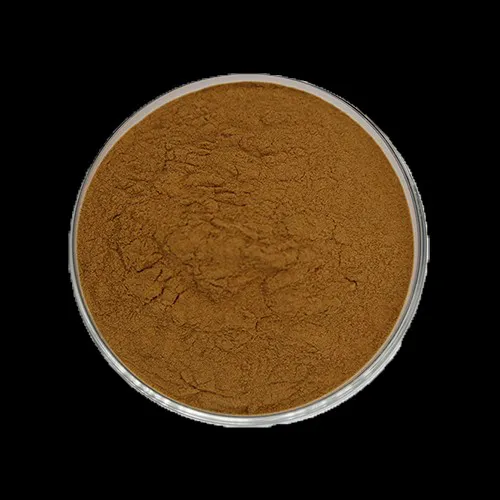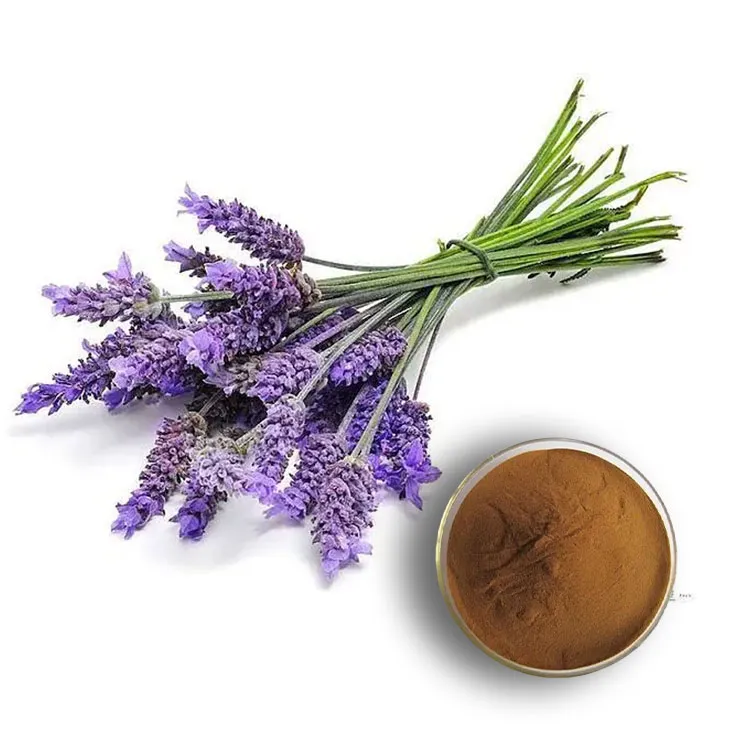- 0086-571-85302990
- sales@greenskybio.com
How to Extract Lavender Extract by Steam Distillation.
2024-11-30

1. Introduction to Lavender and Steam Distillation
Lavender is a well - known and highly valued plant in the world of aromatherapy, perfumery, and natural remedies. It has a distinct and pleasant fragrance that makes it a popular choice for various applications. Steam distillation is one of the most common and effective methods for extracting essential oils and extracts from plants, and lavender is no exception.
The principle behind steam distillation is based on the fact that the essential oils in lavender have different boiling points compared to water. When steam is passed through the lavender plant material, the volatile compounds (including the essential oils) vaporize along with the steam. These vapors are then condensed back into a liquid state, and the resulting liquid contains both water and the Lavender Extract. The two can be separated further to obtain a relatively pure Lavender Extract.

2. Characteristics of Lavender for Steam Distillation
Lavender's Chemical Composition makes it suitable for steam distillation. It contains a complex mixture of volatile compounds, such as linalool, linalyl acetate, and cineole. These compounds are responsible for its characteristic aroma and also have various therapeutic properties.
The structure of the lavender plant also plays a role. The small, tubular flowers and the fine foliage of lavender allow steam to penetrate easily during the distillation process. This ensures that a maximum amount of the essential oils can be extracted from the plant material.

3. Step - by - Step Steam Distillation Process
3.1. Preparation of Lavender
- Harvesting: Lavender should be harvested at the appropriate time. For most lavender varieties used in extraction, the best time is when the flowers are in full bloom. This is usually in the mid - to - late summer. - Drying (Optional): In some cases, the lavender may be dried slightly before distillation. However, this should be done carefully as over - drying can cause the loss of some volatile compounds. If drying is done, it should be in a well - ventilated area away from direct sunlight. - Chopping or Crushing: The lavender plant material, whether fresh or dried, should be chopped or crushed gently. This increases the surface area available for the steam to interact with, facilitating better extraction.
3.2. Setting up the Steam Distillation Apparatus
- Steam Generator: A reliable steam generator is needed. This can be a simple kettle - like device or a more sophisticated industrial - grade steam generator depending on the scale of extraction. - Distillation Flask: The lavender plant material is placed in the distillation flask. The flask should be large enough to hold the material without overcrowding. - Condenser: The condenser is attached to the distillation flask. Its function is to cool the vapors that come from the distillation flask and convert them back into a liquid state. - Receiver Flask: The condensed liquid is collected in the receiver flask. This flask should be clean and sterile.
3.3. The Distillation Process
1. Steam Introduction: Steam is slowly introduced into the distillation flask containing the lavender. The steam should be at a consistent pressure and flow rate. Too high a pressure can damage the plant material and affect the quality of the extract, while too low a pressure may result in incomplete extraction. 2. Vaporization: As the steam passes through the lavender, the volatile compounds in the plant vaporize along with the steam. This mixture of steam and lavender vapors rises up through the distillation flask and into the condenser. 3. Condensation: In the condenser, the hot vapors are cooled down. The condenser is usually cooled by running cold water around it. As the vapors cool, they condense back into a liquid, which then drips down into the receiver flask. 4. Separation: The liquid collected in the receiver flask is a mixture of water and Lavender Extract. This mixture can be further separated using techniques such as decantation or the use of a separating funnel. The lavender extract, which is less dense than water, will float on top and can be carefully removed.

4. Safety Precautions during Steam Distillation
- Heat - related Hazards: The steam generator and the distillation flask can get very hot during the process. Always use heat - resistant gloves when handling these components. Also, make sure that the equipment is placed on a stable and heat - resistant surface to prevent accidents. - Steam Burns: Steam can cause severe burns. Ensure that the steam release valves and connections are properly sealed to prevent accidental steam leaks. If any steam leaks are detected, immediately stop the distillation process and repair the leak. - Chemical Exposure: Although lavender is generally considered safe, some people may be allergic to it. Also, during the distillation process, other compounds may be released. It is advisable to work in a well - ventilated area or use appropriate ventilation equipment to avoid inhaling concentrated vapors.
5. Storage of Lavender Extract
- Container Selection: The lavender extract should be stored in a dark - colored glass bottle. Dark glass helps to protect the extract from light, which can degrade the quality of the extract over time. The bottle should have a tight - fitting lid to prevent evaporation and contamination. - Storage Conditions: Store the extract in a cool, dry place. A temperature - controlled environment, such as a cellar or a pantry, is ideal. Avoid storing the extract near sources of heat or direct sunlight. - Shelf - life: When stored properly, lavender extract can have a relatively long shelf - life. However, it is advisable to use it within a year or two for the best quality. Regularly check the extract for any signs of spoilage, such as a change in color or odor.
6. Economic Importance of Lavender Extract in the Market
- Aromatherapy and Wellness Industry: Lavender extract is a key ingredient in the aromatherapy market. It is used in diffusers, massage oils, and bath products. The increasing popularity of aromatherapy and natural wellness products has led to a growing demand for high - quality lavender extract. - Perfumery: In the perfume industry, lavender extract adds a unique and fresh floral note. It is often blended with other essential oils and fragrances to create a wide range of perfumes, from light and floral scents to more complex and sophisticated fragrances. - Cosmetics and Skincare: Lavender extract has antibacterial and anti - inflammatory properties, making it a valuable ingredient in cosmetics and skincare products. It can be found in products such as creams, lotions, and toners, targeting various skin conditions and promoting healthy skin.
FAQ:
What are the characteristics of lavender suitable for steam distillation?
Lavender contains essential oils that are volatile. These volatile compounds can be effectively separated from the plant material using steam distillation. The structure and chemical composition of lavender allow the steam to penetrate and carry the essential oil components out during the distillation process.
What are the steps in the steam distillation process for lavender extract?
First, harvest fresh lavender and clean it gently to remove any dirt or debris. Then, place the lavender in the distillation apparatus. Heat water to produce steam which is passed through the lavender. As the steam rises, it takes the essential oil components along with it. The steam - oil mixture is then cooled, causing the steam to condense back into water, and the oil separates and can be collected.
What safety precautions should be taken during lavender steam distillation?
Ensure proper ventilation in the distillation area as some of the vapors may be irritating. Use heat - resistant gloves and safety goggles when handling the hot apparatus. Make sure the distillation equipment is in good condition to prevent leaks of hot steam or boiling water. Also, keep a safe distance from the heat source to avoid burns.
How should the obtained lavender extract be stored?
The lavender extract should be stored in a cool, dark place. It is best to use amber - colored glass bottles to protect it from light. The bottle should have a tight - fitting lid to prevent evaporation and contamination. It can also be stored in a refrigerator for longer shelf - life.
What is the economic importance of lavender extract in the market?
Lavender extract has a high economic importance. It is widely used in the perfume industry due to its pleasant fragrance. In the cosmetic industry, it is used in various products like lotions, creams, and soaps. It also has applications in aromatherapy, which is a growing market. Additionally, it can be used in the food and beverage industry for flavoring in some cases.
Related literature
- Steam Distillation of Lavender: A Comprehensive Review"
- "The Science and Economics of Lavender Extract Production"
- "Lavender Essential Oil: From Steam Distillation to Market"
- ▶ Hesperidin
- ▶ citrus bioflavonoids
- ▶ plant extract
- ▶ lycopene
- ▶ Diosmin
- ▶ Grape seed extract
- ▶ Sea buckthorn Juice Powder
- ▶ Beetroot powder
- ▶ Hops Extract
- ▶ Artichoke Extract
- ▶ Reishi mushroom extract
- ▶ Astaxanthin
- ▶ Green Tea Extract
- ▶ Curcumin Extract
- ▶ Horse Chestnut Extract
- ▶ Other Problems
- ▶ Boswellia Serrata Extract
- ▶ Resveratrol Extract
- ▶ Marigold Extract
- ▶ Grape Leaf Extract
- ▶ blog3
- ▶ blog4
-
Certified organic kidney bean extract.
2024-11-30
-
Nature's Bounty Lily Extract.
2024-11-30
-
Marigold Extract
2024-11-30
-
Motherwort Extract
2024-11-30
-
Aminolevulinic acid
2024-11-30
-
Nettle leaf extract
2024-11-30
-
Cassia Seed Extract
2024-11-30
-
Purple Sweet Potato Extract
2024-11-30
-
Horse Chestnut Extract
2024-11-30
-
Black Pepper Extract
2024-11-30
-
Okra Extract
2024-11-30
-
Elderberry Extract
2024-11-30





















